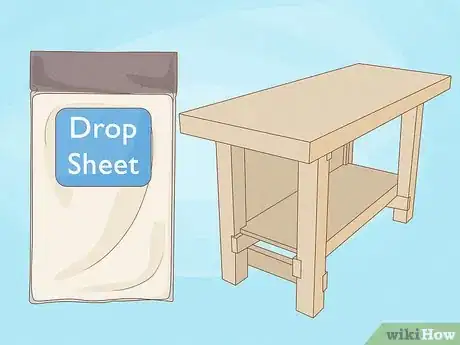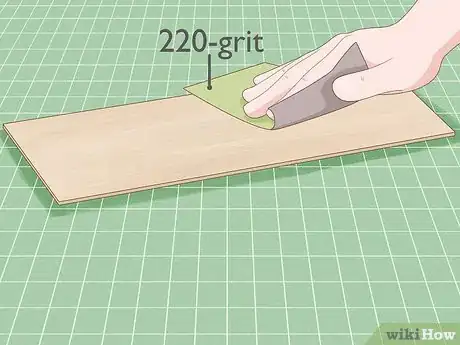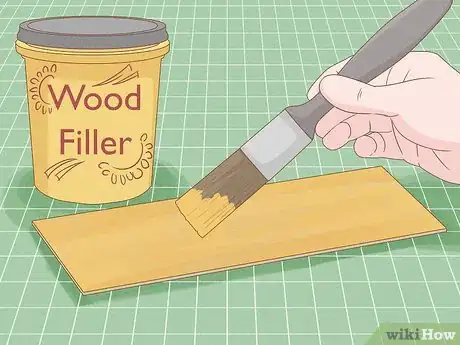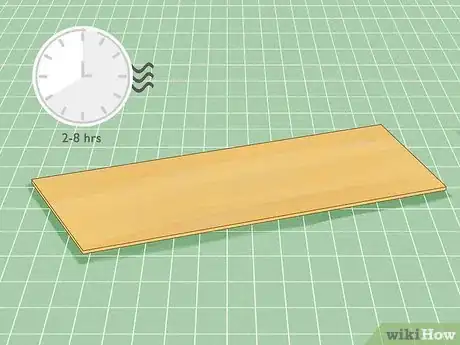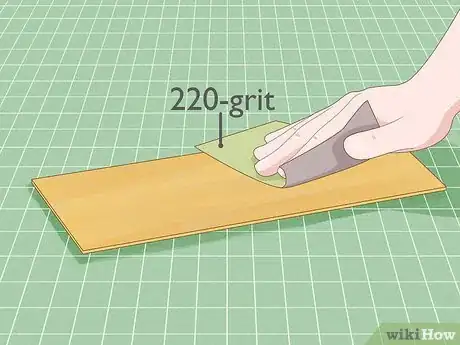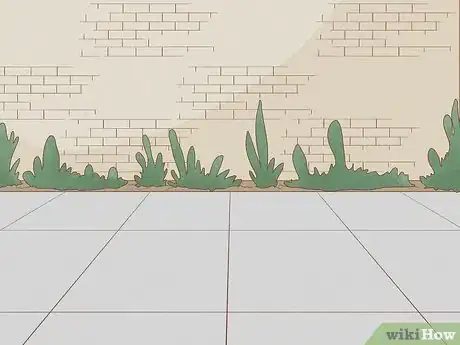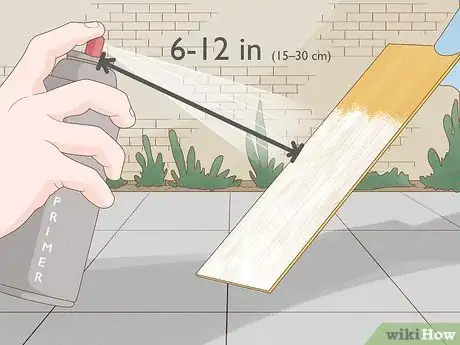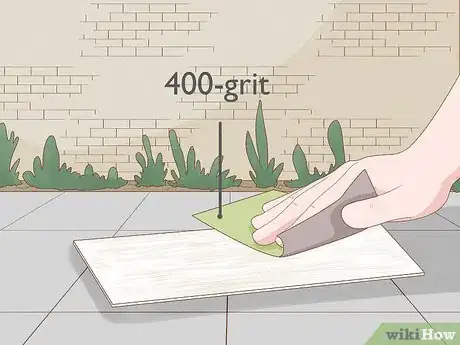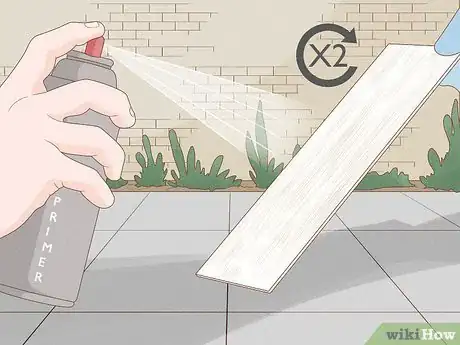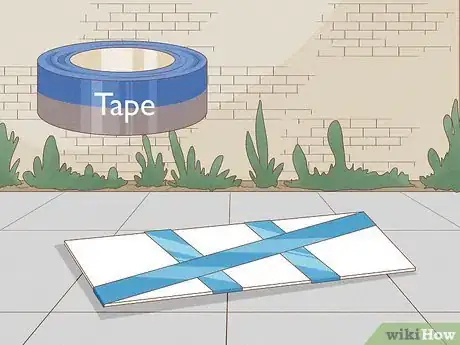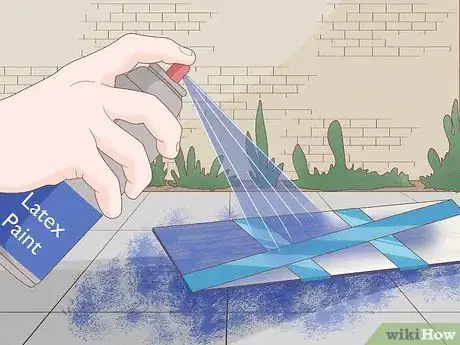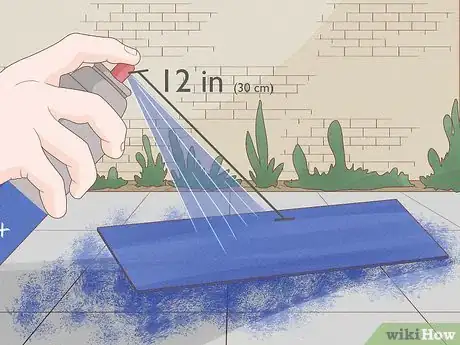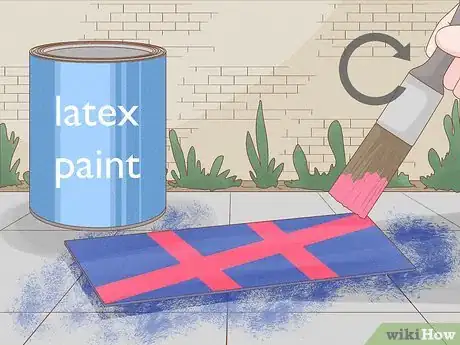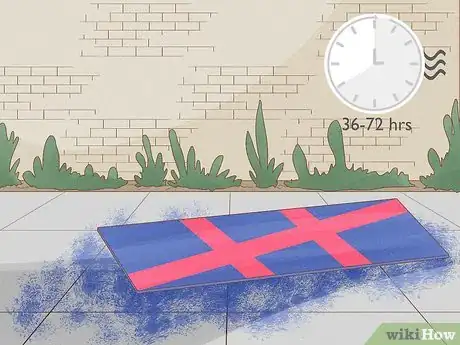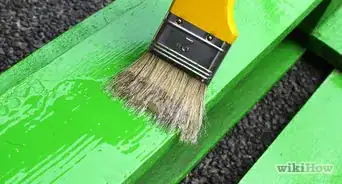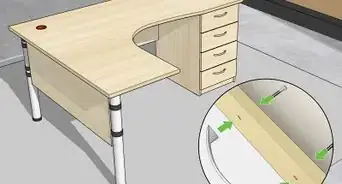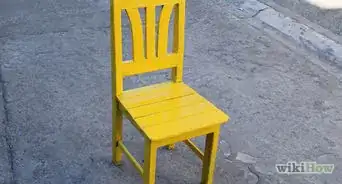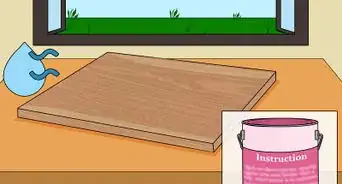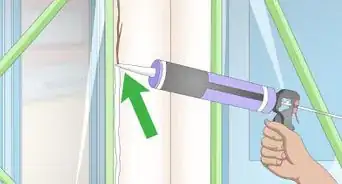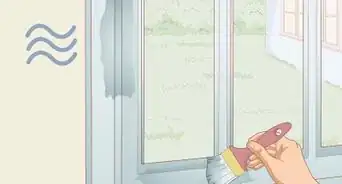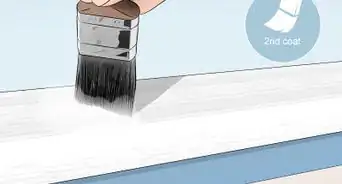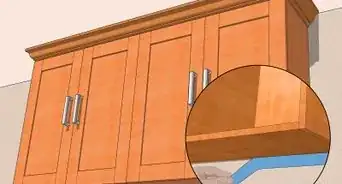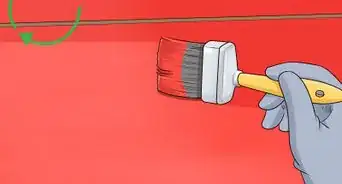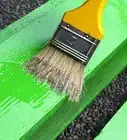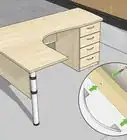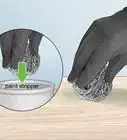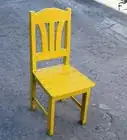This article was co-authored by Jeff Huynh. Jeff Huynh is the owner of Moseybolt, a full service solution in home services, renovations, and repair in the Greater Seattle area. He has over five years of handyman experience. He has a BS in Business Administration from the San Francisco State University and his Certificate in Industrial Electronics Technology from North Seattle College.
There are 7 references cited in this article, which can be found at the bottom of the page.
This article has been viewed 20,251 times.
Balsa is a handy, lightweight wood that’s great for paneling and making models. However, balsa is a little tricky to paint because it’s such a soft, porous wood. This means it can absorb paint and give you an uneven finish. But don’t worry, you’re not out of luck! It takes some extra steps, but you can successfully paint balsa wood on your own.
Steps
Sealing
-
1Work over a drop cloth or workbench. The sanding and sealing process can make a mess, so be sure to work in a spot that’s easy to clean. Working over a sheet or drop cloth makes picking up sawdust and leftover sealer much easier.[1]
- If it’s a nice day, working outside is always a good choice.
-
2Sand the balsa with 220-grit sandpaper. Use a smooth, back and forth motion to rough up the surface of the wood.[2] Sand all the parts that you’ll be painting so the primer and paint stick better. Apply only light pressure so you don’t cause any holes or uneven spots on the wood.[3]
- If you’ll be painting both sides of the wood, like for a model, be sure to sand both sides.
- If you do rub a little too hard and leave some low spots on the wood, that’s okay. The wood filler can fix that.
Advertisement -
3Brush on a coat of wood filler to seal the wood surface. Dip a normal paintbrush into a bottle of wood filler. Then brush a thick layer of filler onto the entire balsa surface until you can't see the wood grain underneath. Don’t miss any spots or the paint will be uneven.[4]
- Many hobbyists recommend Elmer’s Wood Filler Light for this job, but any other wood filler will also work.
- Don’t worry if the filler drips or runs a little. You can fix that when you sand the wood.
- You need to mix some wood fillers with water first to thin them out. Always read and follow the instructions on the wood filler that you use, just in case they’re different.
-
4Let the wood filler dry for about 2-8 hours. Leave the wood out in a spot where it won’t be disturbed. Wait for it to dry completely before moving on.[5]
- The wood filler dry time varies, but is usually around 2 hours. Thicker types might take up to 8 hours. Follow the recommended drying time on the product you use.
-
5Sand the wood again with 220-grit sandpaper.[6] Use the same fine-grit sandpaper that you first sanded the wood with. Continue sanding until you can see the wood grain through the wood filler. This gives you a nice smooth surface for the paint to stick to.[7]
- Be sure to sand the corners and edges if you’re painting the whole piece of wood. Otherwise the paint might not stick as well in these spots.
- If there are any spots where the wood filler dripped, you can even these out with the sandpaper.
- Sanding the filler off will make a lot of dust, so be ready to wipe that up when you're done.
Priming
-
1Work outside or in a well-ventilated area. Spray paint and primer is best for balsa wood. The only problem is this creates a lot of fumes. Be sure to work outdoors or open all the windows in the area you’re working to protect yourself.
- You could use brush-on primer and paint too, but apply a very light coat. They could drip and ruin the finish.[8]
-
2Spray a coat of sandable primer onto the wood. Shake the can of primer well and hold it 6–12 in (15–30 cm) from the wood. Spray in a sweeping motion until you cover the entire surface. Keep the can moving so the primer doesn’t pool or drip.[9]
- You need to use sandable primer because you’ll be sanding it between coats.[10]
- Primer is important because the paints won’t stick properly without it, so don’t skip this step.
-
3Sand the primer when it’s dry with 400-grit sandpaper. Wait until the primer is completely dry. Then, use this very fine-grit sandpaper and give the wood a light sanding.[11]
- The drying time depends, and could range from an hour to a full day. Follow the instructions on the primer you use.
-
4
Painting
-
1Tape off sections that will be a different color. If you’re making a model or using a decorative pattern, then you’ll want nice, even lines for your paint. Use painter’s tape and cover any areas that will be a different color from the first coat.[14]
- On model rockets, for example, the nose is usually a different color from the body. Cover the nose with tape, paint the body, then remove the tape and paint the nose separately.
- Hobbyists recommend plain masking tape or clear Scotch tape along with painter’s tape for the best results.
- Don’t use a tape that’s sticky, like packing or duct tape. This will leave residue on the wood and ruin the finish.
-
2Spray a light coat of enamel or latex paint onto the wood and let it dry. These are the best paint types for balsa. Shake the can well and hold it 12 in (30 cm) away from the wood. Spray in a sweeping, back and forth motion to cover the wood. Only apply a light coat so the paint doesn’t run.[15]
- Keep the can 12 in (30 cm) away from wood so the finish is even.
- It’s okay if the paint looks blotchy or you can still see the wood underneath. This is just a light coat, and it’ll even out with later coats.
- Just like with primer, you could also use a brush-on paint too. But remember to apply very light coats so the paint doesn’t run.
-
3Keep applying paint after the previous coat dries until the finish is even. Let the first coat dry completely, then spray on another light coat.[16] Let it dry, and continue until you have a nice, even finish that doesn’t show the wood grain underneath it.[17]
- The drying time varies depending on the paint you use. Always check and confirm the right drying time.
- The number of coats you’ll need varies, but expect to apply 3-4 for an even finish.
-
4Paint the remaining sections if they were covered with tape. If you taped off any sections of the wood, peel the tape off when the first color is completely dry. Then cover that section with tape and spray the second color on.[18]
- If you only used one color, then there’s no need to tape or paint anymore.
-
5Let the paint cure entirely for 2-3 days. The paint can take anywhere from 36 to 72 hours to completely cure. Leave the wood alone for that time and let the paint cure, then you can move it where you want it.[19]
- Check the instructions on the paint you use for the proper curing time.
Expert Q&A
-
QuestionCan you paint directly onto wood?
 Jeff HuynhJeff Huynh is the owner of Moseybolt, a full service solution in home services, renovations, and repair in the Greater Seattle area. He has over five years of handyman experience. He has a BS in Business Administration from the San Francisco State University and his Certificate in Industrial Electronics Technology from North Seattle College.
Jeff HuynhJeff Huynh is the owner of Moseybolt, a full service solution in home services, renovations, and repair in the Greater Seattle area. He has over five years of handyman experience. He has a BS in Business Administration from the San Francisco State University and his Certificate in Industrial Electronics Technology from North Seattle College.
Professional Handyman It's best to sand down the wood for a smooth finish. After, apply primer, sanding in between coats of primer in order to get a better adhesion to the paint. With environmental changes commonly warping wood, I recommend waiting a full day in between coats of paint.
It's best to sand down the wood for a smooth finish. After, apply primer, sanding in between coats of primer in order to get a better adhesion to the paint. With environmental changes commonly warping wood, I recommend waiting a full day in between coats of paint.
Things You’ll Need
- Paintbrush
- Wood filler
- Spray latex or enamel paint
- Spray primer
- 220- and 400- grit sandpaper
- Painter’s tape
- Water
- Sheet or drop cloth
References
- ↑ https://www.hgtv.com/design/decorating/design-101/how-to-add-wood-paneling-to-your-walls-with-balsa-wood
- ↑ Jeff Huynh. Professional Handyman. Expert Interview. 30 April 2019.
- ↑ https://youtu.be/plnvslb1MN0?t=158
- ↑ https://youtu.be/plnvslb1MN0?t=499
- ↑ https://api.ag.purdue.edu/api/DepotWS/File.ashx?t=f&i=8076
- ↑ Jeff Huynh. Professional Handyman. Expert Interview. 30 April 2019.
- ↑ https://youtu.be/plnvslb1MN0?t=682
- ↑ https://www.nar.org/educational-resources/model-rocket-building-techniques/masking-painting/
- ↑ https://api.ag.purdue.edu/api/DepotWS/File.ashx?t=f&i=8076
- ↑ Jeff Huynh. Professional Handyman. Expert Interview. 30 April 2019.
- ↑ https://www.nar.org/educational-resources/model-rocket-building-techniques/masking-painting/
- ↑ Jeff Huynh. Professional Handyman. Expert Interview. 30 April 2019.
- ↑ https://api.ag.purdue.edu/api/DepotWS/File.ashx?t=f&i=8076
- ↑ https://www.nar.org/educational-resources/model-rocket-building-techniques/masking-painting/
- ↑ https://api.ag.purdue.edu/api/DepotWS/File.ashx?t=f&i=8076
- ↑ Jeff Huynh. Professional Handyman. Expert Interview. 30 April 2019.
- ↑ https://api.ag.purdue.edu/api/DepotWS/File.ashx?t=f&i=8076
- ↑ https://www.nar.org/educational-resources/model-rocket-building-techniques/masking-painting/
- ↑ https://api.ag.purdue.edu/api/DepotWS/File.ashx?t=f&i=8076
